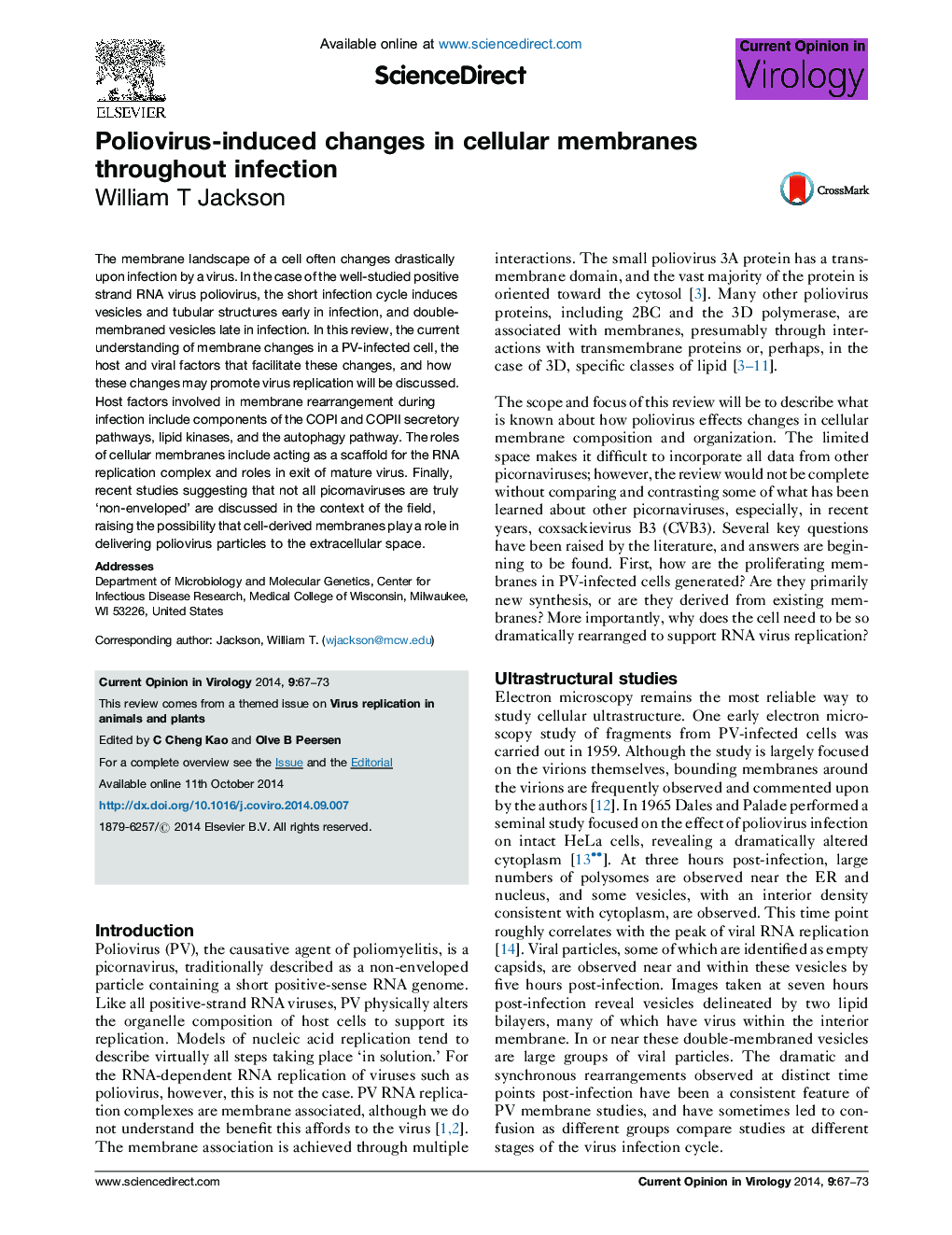| Article ID | Journal | Published Year | Pages | File Type |
|---|---|---|---|---|
| 2473327 | Current Opinion in Virology | 2014 | 7 Pages |
•Ultrastructural studies observe distinct membrane rearrangements at early and late time points post-poliovirus infection.•The lipid kinase PI4KIIIβ and its product PI4P are consistent features of virus-induced membranes.•Components of the COPI and COPII secretory pathways generate early single-membraned RNA replication vesicles.•Cell-derived autophagic membranes play a role in delivering poliovirus particles to the extracellular space.
The membrane landscape of a cell often changes drastically upon infection by a virus. In the case of the well-studied positive strand RNA virus poliovirus, the short infection cycle induces vesicles and tubular structures early in infection, and double-membraned vesicles late in infection. In this review, the current understanding of membrane changes in a PV-infected cell, the host and viral factors that facilitate these changes, and how these changes may promote virus replication will be discussed. Host factors involved in membrane rearrangement during infection include components of the COPI and COPII secretory pathways, lipid kinases, and the autophagy pathway. The roles of cellular membranes include acting as a scaffold for the RNA replication complex and roles in exit of mature virus. Finally, recent studies suggesting that not all picornaviruses are truly ‘non-enveloped’ are discussed in the context of the field, raising the possibility that cell-derived membranes play a role in delivering poliovirus particles to the extracellular space.
